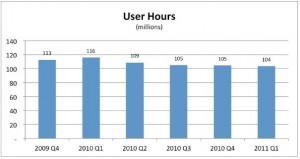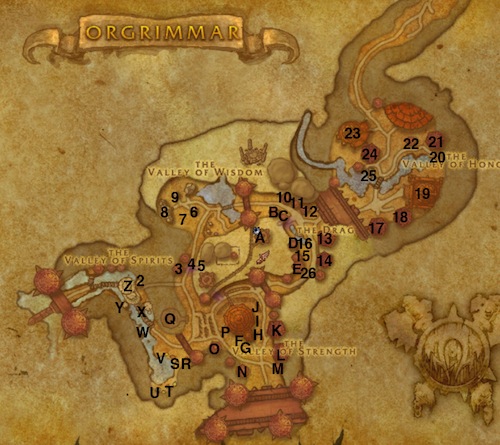 1. PC World (USA) – Companies Explore Private Virtual Worlds. “Meetings, conferences and training programs in a 3D virtual world such as Second Life can be more engaging and productive than traditional online sessions and phone calls, and much less expensive than face-to-face meetings requiring travel. But some companies aren’t willing to take on the security and compliance risks of using a public platform and are instead opting for private virtual worlds created behind the corporate firewall. “Once it’s on your platform, behind your walls, it has the same security as any other intranet application,” says Steven Russell, a research scientist at Siemens Corporate Research. Siemens employees study product prototypes using OpenSim, an open-source platform that simulates the user interface, content and scripting functionality of Second Life.”
1. PC World (USA) – Companies Explore Private Virtual Worlds. “Meetings, conferences and training programs in a 3D virtual world such as Second Life can be more engaging and productive than traditional online sessions and phone calls, and much less expensive than face-to-face meetings requiring travel. But some companies aren’t willing to take on the security and compliance risks of using a public platform and are instead opting for private virtual worlds created behind the corporate firewall. “Once it’s on your platform, behind your walls, it has the same security as any other intranet application,” says Steven Russell, a research scientist at Siemens Corporate Research. Siemens employees study product prototypes using OpenSim, an open-source platform that simulates the user interface, content and scripting functionality of Second Life.”
2. Information Week (USA) – DOD Explores Virtual Worlds For Military Training. “There’s no completely realistic way to prepare a soldier for the experience of today’s combat situations, in which they must battle hidden improvised explosive devices (IEDs), elusive terrorists, and other unfamiliar enemies in physical environments that are often new to them. The Department of Defense is trying to come pretty close, however, by training soldiers with a variety of tools similar to computer games that create virtual worlds simulating environments and situations soldiers may encounter during warfare. The American Forces Press Service, or AFPS–the press agency of the DOD–has posted a six-part series highlighting the department’s virtual training technology on its website. The Enhanced Dynamic Geosocial Environment, for example, prepares soldiers for encounters with IEDs and other types of explosive devices by simulating the type of physical environment in which they might find them, as well as the explosion and damage these devices create. A video demonstrating EDGE is available on the AFPS website.
3. NBC Washington (USA) – Operators of Virtual Worlds Fined $3M. “Hundreds of thousands of children under age 13 had their personal information illegally collected and disclosed and now the companies responsible are paying millions of dollars in fines. The Federal Trade Commission said the operators of 20 online virtual worlds have agreed to pay $3 million to settle charges that they violated the Children’s Online Privacy Protection Rule (COPPA). The FTC said Playdom, Inc., operated 20 virtual world websites where users could access online games. Some of the sites were directed to children. The complaint alleges that the company collected the children’s ages and email addresses and then enabled children to publicly post their full names, email addresses, instant messenger IDs, and location on personal profile pages without parental consent. The FTC rules require that website operators notify parents and obtain their consent before they collect, use or disclose children’s personal information. The FTC alleged that Playdom failed to meet these requirements.”
4. Hypergrid Business (Hong Kong) – HuzuTech releases social virtual worlds platform. “HuzuVirtual is a brand new technology from HuzuTech, which promises to revolutionize the rapidly evolving social gaming market. The technology allows the creation of stand-alone, browser-based, online worlds – which can be played on any device, by multiple players. Huzutech today launched Paperworld, a technology demonstrator, which shows how social networks, virtual worlds, online communities and massively multiplayer games are all now intersecting. Paperworld offers an example of how companies can combine the mass appeal of social networks and online communities with the entertainment and engagement of multiplayer games and virtual worlds.”
5. defence.professionals (USA) – Virtual Worlds Form Defense Training Frontier . “Five years from now, if Frank C. DiGiovanni has his way, warfighters from every service will learn aspects of their trade on a world in cyberspace. The Defense Department will save money, time, and ultimately, lives, he said, and it’s his job to make that virtual world a reality. DiGiovanni is director of training readiness and strategy in the office of the deputy assistant secretary of defense for readiness. He’s also a retired Air Force colonel and a senior aviator. “I’d love to see it happen in the next 18 months to two years,†DiGiovanni said in an interview with American Forces Press Service. “Realistically, a full-up world is probably five years away.†Over the next five years, the Defense Department will build that world in cyberspace, where the men and women of the armed forces will take another step forward in the transition from analog to digital technology that began with the public Internet and DOD websites.”
6. Global Times (China) – National stereotypes find life in fantasy worlds. “”I don’t think China should keep helping North Korea,” my friend boldly declared the other day, “You can’t trust Koreans.” “Why?” I asked. “Simple,” he said, “I was playing online with three North Koreans on the same team as me the other day, and they only talked among themselves and kept leaving me to die.” My friend’s extension of online games to international politics might be absurd, but virtual worlds are starting to play powerful role in how people see each other. This is especially the case in Asia, where online games eat up the attention of millions of young people. When I was at university four years ago, it was normal for me and my friends to spend the entire weekend in Internet cafes. Some of us even fell asleep there. It may sound weird, but the legions of Chinese in online games have an effect on how the world perceives us. Think about physical sports. The Italian reputation for being cheats and sneaks may be undeserved, but it persists in part because of the dirty way Italian soccer teams play. Equally, the Brazilian reputation for style and grace comes about, in part, because of their dedication to playing a beautiful game. ”
7. Mashable (USA) – Why Online Communities Are Redefining the Concept of Local. “When we talk about community, we talk about places and spaces. But online communities transcend geography. That tends to mess with our heads. In trying to understand the new, it helps to fall back on the old, using metaphors drawn from familiar sources. Cities have streets, blocks and neighborhoods. Why wouldn’t virtual worlds have the same? In the ’90s, when we started to colonize cyberspace by the hundreds of thousands (and then by the millions), virtual cities became all the rage. Academics and technologists argued, in all apparent seriousness, that we would click on a 3D picture of a supermarket to go shopping, then wander our avatars down virtual streets to go to our next task. Yahoo bought GeoCities — a collection of homepages organized by neighborhood. AOL and Tribune launched Digital City. Corporations from Citigroup to SAP moved into virtual terrain.”
8. Gamasutra (USA) – NCsoft Shutting Down Western Lineage Servers.”After over 12 years of operation, NCsoft said the North American servers for its MMO Lineage will be shut down on June 29, saying the aging title “is no longer financially viable in the West.” In an FAQ explaining the move, NCsoft said it had to make “a hard decision based on the business performance to focus our resources to make those games provide the best play experience as possible for our customers.” The company is no longer accepting new subscribers for the game, and will allow anyone to play for free while the servers remain up. Current subscribers will have any unused time refunded, and will receive two months of free game time in three other NCsoft titles — Lineage II, Aion and City of Heroes — as well as an activation code for the subscription-free Guild Wars.”
9. VentureBeat (USA) – National Geographic virtual world Animal Jam hits a million kids. “National Geographic Animal Jam is a rarity as a successful kids virtual world. The online world is announcing today that it has reached a million registered players in seven months. Sure, virtual worlds have lost their luster and Animal Jam isn’t growing as fast as Facebook. But there aren’t that many worlds aimed at kids ages 5 to 11 that have taken off like that lately. Animal Jam was created by Salt Lake City-based Smart Bomb Interactive, which licensed the National Geographic name. Kris Johnson, chief executive of Smart Bomb Interactive, said the growth rate has exceeded all expectations and that the property has spread through word of mouth.”
10. PC World (USA) – Tell Your Boss: Play Video Games, Work Smarter. “It’s safe to say that employers generally frown on workers who play video games during work time. As common sense dictates, you’re obviously not working when trying to win virtual gold by playing World of Warcraft or stealthily assassinating the enemy in Call of Duty: Black Ops. But gaming outside of work or even during breaks at the office can help you in ways you might never have thought possible. Indeed, studies show that gaming can boost your ability to multitask, make faster decisions, work better in team environment, and find solutions to real-world problems. Can WoW help you pack more action into the work day? Playing any one of the titles in the Half-Life and Half-Life 2 franchise can get the adrenaline flowing. As you assume the role of Gordon Freeman, you must constantly make split-second decisions when trying to decide how to kill one of the thousands of enemies you encounter. You also have to quickly decide which weapon to use, all the while trying to solve puzzles in order to advance to the next level. The decision-making process on which you rely in Half-Life or any one of hundreds of other action-game titles is called probabilistic inference. You use the thinking process to draw conclusions and make decisions based on incomplete information and fact patterns, reported researchers in Current Biology.”









Recent Comments